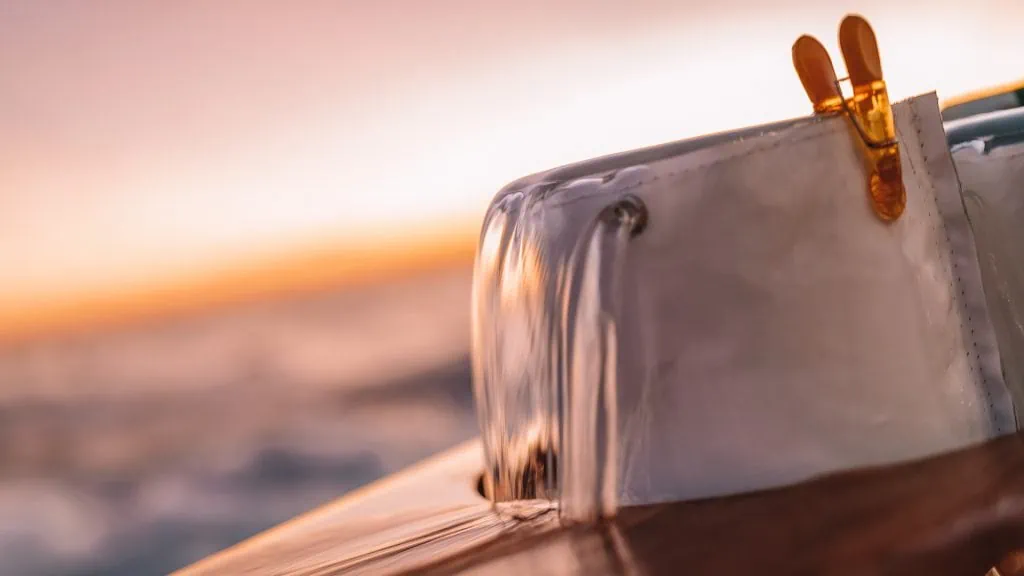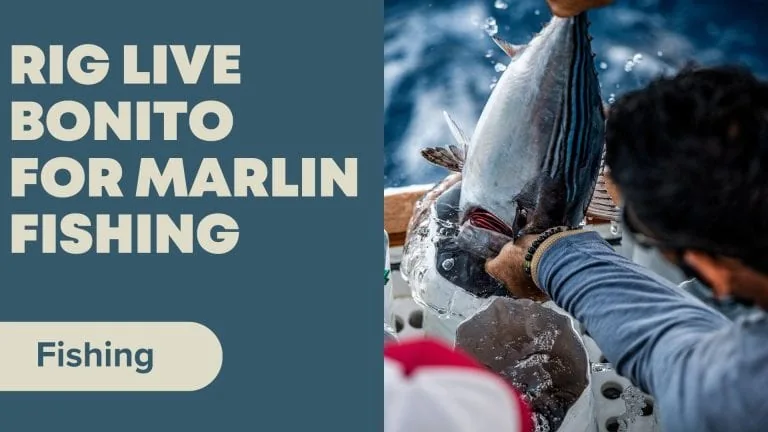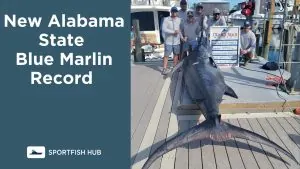During my travels to renowned marlin fishing destinations like Cabo San Lucas, St. Thomas, and Madeira, I’ve had the privilege of learning from expert anglers who specialize in rigging live bonito and skipjack tuna as bait.
Now, I’m excited to share my insights with you in a straightforward, easy-to-follow guide on how to rig a live bonito for marlin fishing. Let’s dive in and uncover the secrets to success in marlin fishing, so you can reel in that trophy catch you’ve always dreamed of.

Selecting the Right Hook and Line
First, you’ll need to select the right hook and line for your live bonito rig. A 12/0 circle hook is a great choice. Pair it with a loop knot on about 200-pound fluorocarbon line for optimal results.
Two Methods of Rigging Live Bonito
I have personally witnessed two methods for rigging a live Bonito or Skip Jack for Marlin Fishing. One method involves running the needle through the Bonitos eye, and the other involves running the needle (Or just the hook) through the nose of the bait. Below I will put together basic instructions for each method, but it is going to be best to watch the videos we provide:
Rigging Live Bonito Through The Eye:
Step 1: Prepare the Rigging Needle
- Select a rigging needle: Choose a rigging needle that’s suitable for the size of the bonito and the thickness of your monofilament line.
- Create a loop: Use the rigging needle to form a loop of monofilament through the bonito’s eye, ensuring it’s the appropriate size to accommodate the hook and fluorocarbon line.
Step 2: Thread the Loop Knot
- Prepare the fluorocarbon line: Cut your 200-pound fluorocarbon line to the desired length, and tie a loop knot at one end. This loop knot will be used to connect the line to the rigging needle.
- Thread the rigging needle: Run the loop knot on the fluorocarbon line through the rigging needle, being careful not to damage the monofilament loop or the bonito’s eye.
- Attach the hook: Pass the loop knot through the point of the hook, ensuring the hook is positioned properly in relation to the bonito’s eye and the loop knot.
Step 3: Secure the Hook
- Create a tight loop: Adjust the loop on the fluorocarbon line to create a tight connection between the bonito’s eye and the hook head, which should be positioned in the front of the bonito’s forehead.
- Check for freedom of movement: Ensure the bonito can swim freely with the hook attached. A properly rigged bonito should exhibit natural, uninhibited swimming behavior, increasing its attractiveness to black marlin and big tuna.
Bridling Live Bait for Billfish Through the Nose
Another effective method for rigging live bait like bonito for billfish is using a bridle rig through the nose, either by putting the bridle through the nose and then attaching the hook or by simply putting the hook through the nose/mouth directly. Here’s how to do it:
- Choose the right hook: Start with a 9/0 Owner circle hook or a similar size appropriate for your bait.
- Create a bridle: Use a small section of 50- to 200-pound test Dacron that matches the size of the bait to create a bridle.
- Attach the bridle to the hook: Loop the bridle back through itself, connecting it to the hook.
- Attach the bait needle to the bridle: This will help you secure the bait to the hook.
- Catch a live bonito or skipjack tuna: Grab your bait (typically from a Tuna Tube).
- Hold the bait upright with both hands with the nose facing outward: Slide the tip of the bait needle into the nose of the bait through to the top of the mouth.
- Pull the bridle through: Make sure to have two sections showing just in front of the fish’s eyes.
- Remove the bait needle: Ensure the bridle loop doesn’t get pulled back through the fish before securing it to the hook.
- Secure the hook: Spin the hook, twisting the two ends of the bridle tightly together until it becomes snug on the fish.
- Insert the hook: Pass the barb through the bridle and slide it to the center or bend of the hook to finish off the bridling.
- Place the bait in the water: Gently release the bait into the water, making sure not to damage it.
- Start fishing: Begin trolling with your newly rigged live bait, keeping an eye on its movement and adjusting your speed accordingly.
Tip: In Mexico, I saw many anglers attach rubber bands to the lines and then put the rubber bands into the outrigger clips. This helps give you a visual aid to determine if the bait is getting scared while allowing you to set and keep the right amount of drag on your reels for a strike.
The Bridle Buddy
As an angler, we’re always on the lookout for innovative tools that can make our fishing experience more efficient and effective. One such tool is definitely the Bridle Buddy, designed to simplify the process of rigging live bait while minimizing damage to the baitfish.
The Bridle Buddy is a small plastic or metal device that helps you insert a plastic dart through the baitfish’s nose with ease. To use the tool, follow these steps:
- Rig the dart to your hook using waxed thread or dental floss.
- Place the dart into the Bridle Buddy Tool.
- Carefully insert the dart through the top of the baitfish’s nose and into its mouth.
Once the dart is in place, tighten the thread or floss, this will cause the dart to pivot 90 degrees and lock into position on the roof of the baitfish’s mouth. This technique allows for quick, secure attachment of the baitfish to your leader while reducing fish handling and potential injuries.
The Bridle Buddy is also compatible with various live bait species, including goggle-eyes and bonito.
Enhanced Trolling Tips for Marlin Fishing
When trolling a live bonito for marlin fishing, keep these tips in mind to maximize your chances of success:
Manage Your Drag Pressure
- Initial drag setting: Start with 3-4 lbs of drag at strike. This will help prevent break-offs and ensure a solid hook-up.
- Adjusting drag during the fight: After the 2nd or 3rd long run, gradually increase the drag pressure to help tire the marlin and start gaining line back. Remember not to increase the drag too quickly, as it could result in a broken line or a lost fish.
Properly Hook the Bonito
- Nose hooking: Hook the bonito through the nostrils, ensuring it swims forward when trolled, not sideways. This keeps the bait looking natural and allows it to swim freely, increasing its attractiveness to marlin.
Avoid Stinger Hooks
- Effect on fish behavior: Stinger hooks can affect the way marlin eat the bait, which can lead to more dropped or missed fish.
- Alternative hook choice: Opt for a single circle hook instead, which is known to result in a higher hook-up rate and a more secure connection with the fish, particularly when lip-hooking.
Beginner-Friendly Rig Options
- Circle hook rig: For those new to marlin fishing, experienced anglers often recommend using a simple circle hook rig instead of trolling live bonito. This rig is easier to handle and still effective in attracting marlin.
- Gradual progression: As you become more comfortable with marlin fishing techniques, you can transition to using live bonito for trolling, increasing your chances of success even further.
Final Thoughts
Rigging a live bonito for marlin fishing can be a game-changer for experienced anglers looking to up their chances of catching these incredible fish. By following the steps outlined in this article and using the tips provided, you’ll be well on your way to a successful marlin fishing adventure.
Remember, practice makes perfect. The more you rig live bait, the better and more efficient you’ll become at it. So, get out there, try these techniques, and reel in that trophy marlin you’ve been dreaming of. Good luck and tight lines!












